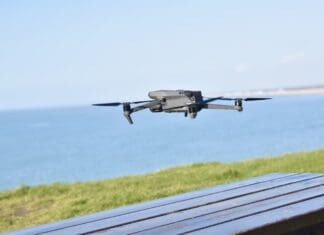This post is also available in:
 עברית (Hebrew)
עברית (Hebrew)
Schools and campuses in the US have been target to a large number of violent attacks. First responders and educators now have a new, free tool at their disposal to help ensure schools safety, students and faculty. The platform can be used to train for any type of incident, from parental custody disputes to potential bomb threats, an active shooter or other critical incident on campus.
The virtual training platform, built on a gaming engine, and called the Enhanced Dynamic Geo-Social Environment (EDGE), allows teachers, school staff, law enforcement officers, and others tasked with school security to create and practice response plans for a wide range of critical incidents.
Built on the Unreal 4 gaming engine, which powers popular video games like Fortnite and Street Fighter 5, EDGE allows first responders and educators to role-play complex scenarios in a virtual environment, improving and reinforcing coordination, communication, and critical decision-making skills. Users control avatars representing their real-life role — teachers, administrators, school resource officers, local law enforcement, and more — to execute a number of training scenarios of their own creation.
The technology was developed by the Department of Homeland Security (DHS) Science and Technology Directorate (S&T), the U.S. Army Simulation and Training Technology Center (STTC), and Cole Engineering Services Inc. (CESI).
William N. Bryan, S&T Senior Official Performing the Duties of the Under Secretary for Science and Technology explains: “In many cases, school staff are the ‘first responders’ at the scene of an on-campus incident. We developed EDGE to help them prepare, so they have a new resource literally at their fingertips. By using EDGE to train, they can know how to act swiftly, decisively, and in collaboration with local emergency responders if and when something does happen.”
“While EDGE leverages the best that gaming technology has to offer, it is important to note that it is not a traditional video game,” said S&T EDGE Program Manager Milt Nenneman. “There are no winners or losers, and there are no pre-programmed situations to react to — EDGE allows agencies to create their own lesson plans, each with different outcomes based on the actions users take in the environment. There is some artificial intelligence programmed in, but for the most part users control the reactions of their own avatars under the guidance of a training manager.”
The platform was intentionally developed as a tool to supplement existing trainings, like field drills or tabletop exercises; because it is user-driven, it reflects the policies and procedures already in place in communities and school districts.
This is the second EDGE environment to be made available, reports officer.com. The initial version, released in June 2017, featured a multi-story hotel environment enabling first responders of all disciplines to train together for a coordinated response to active shooter and other critical incidents.

























